Annual bluegrass
Poa annua |
In the Pacific Northwest, annual bluegrass usually germinates in late summer through spring when moisture is adequate. |
 |
Annual Sowthistle
Sonchus oleraceae |
Annual sowthistle is a very common weed in northwest field nurseries. Because it can germinate quite rapidly, it can quickly become problematic in agricultural areas. |
 |
Bittercress
Cardamine oligosperma |
Bittercress is most problematic in propagation and overwintering of crops. It is most prolific from late fall through early spring. |
 |
Bittersweet Nightshade
Solanum dulcamara |
Bittersweet nightshade is a perennial vine that easily forms into a rambling shrub if not controlled. It is a native of Europe and is also known as woody nightshade or simply bitter nightshade. |
 |
Bristly Hawksbeard
Crepis setosa |
Bristly hawksbeard is common weed in landscapes, lawns and unmanaged areas. It is easily confused, particularly in the rosette stage, with other members of the Asteraceae family. |
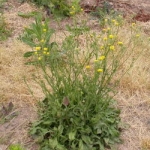 |
Broadleaf Dock
Rumex obtusifolius |
Broadleaf dock, a perennial in the buckwheat family, has large, thick tap root. |
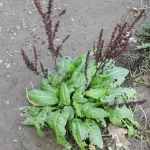 |
Bull thistle
Cirsium vulgare |
Bull thistle is one of the most common thistles the Northwest. In fact, the specific name vulgare means 'common'. |
 |
Canada thistle
Cirsium arvense |
Canada thistle is extremely difficult to kill. A single plant can develop a lateral root system with a 20 foot spread in a single season. |
 |
Common chickweed
Stellaria media |
Common chickweed is primarily a winter annual broadleaf in the Pacific Northwest, but in some coastal areas, it can survive year-round. |
 |
Common groundsel
Senecio vulgaris |
Although groundsel is a winter annual, it is very adaptable and often germinates and grows year round in Oregon's generally milder climate. |
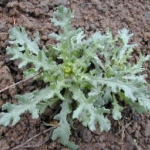 |
Creeping woodsorrel
Oxalis corniculata |
Creeping woodsorrel is one of the Oxalis species commonly found in Oregon nurseries and landscapes. |
 |
Curly Dock
Rumex crispus |
Curly dock is a perennial weed with a large, deep taproot.It originated in Europe and is found throughout the United States. |
 |
Dandelion
Taraxacum officinale |
Dandelion is a hardy perennial which can be persistent in ornamental crops. |
 |
Field bindweed
Convolvulus arvensis |
Field bindweed is a deep-rooted perennial in the Morning-glory family. |
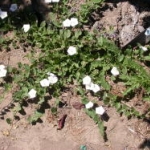 |
Field Horsetail
Equisetum arvense |
Field horsetail is a perennial weed which is native to the Pacific Northwest. It is also one of the most difficult-to-control weeds in nursery crops. |
 |
Horseweed
Conyza canadensis |
Horseweed is sometimes referred to as marestail. It is commonly a tall, erect summer annual weed. |
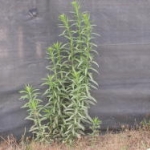 |
Liverwort
Marchantia polymorpha |
Liverworts are not vascular plants, but a more primitive life form similar to mosses. They do not have true leaves like most plants. |
 |
Mouseear chickweed
Cerastium vulgatum |
As the name suggest, mouseear chickweed leaves are oblong, fleshy with pointed tips and prominent hairs or fuzziness-resembling mouse ears. |
 |
Northern willowherb
Epilobium ciliatum |
Regionally, northern willowherb is known by several other common names,
hairy willowherb, slender willowherb, or fringed willowherb. |
 |
Pearlwort
Sagina procumbens |
Pearlwort grows most aggressively in containers and gravel areas where water is abundant. It is commonly found growing with Liverworts. |
 |
Prostrate spurge
Chamaesyce maculata |
During Oregon’s typically cooler summers, Prostrate spurge usually becomes problematic only during the hottest part of summer. |
 |
Redroot pigweed
Amaranthus retroflexus L. |
Redroot pigweed is a summer annual, but commonly germinates throughout the year with adequate moisture. When mature, it usually reaches a he |
 |
Scarlet pimpernel
Anagallis arvensis |
Although it is not in the same family as the other chickweeds, scarlet pimpernel can also be called red chickweed. |
 |
Tansy ragwort
Senecio jacobaea |
Originally a native of Europe and western Asia, Tansy ragwort is an invasive weed in much of the Pacific Northwest. |
 |
Wild carrot
Daucus carota |
Because wild carrot is a biennial, it has a two year life cycle. The first year it forms a rosette of leaves, followed by a second year of f |
 |
Yellow nutsedge
Cyperus esculentus |
Yellow nutsedge is a noxious weed and restrictions on shipping exist for many shipping destinations. It is a serious concern with field grown nursery stock, especially balled in burlap crops. |
 |
Yellow woodsorrel
Oxalis stricta |
Yellow wood sorrel is a species of Oxalis that is commonly found in nurseries and landscapes throughout Oregon. |
 |




























